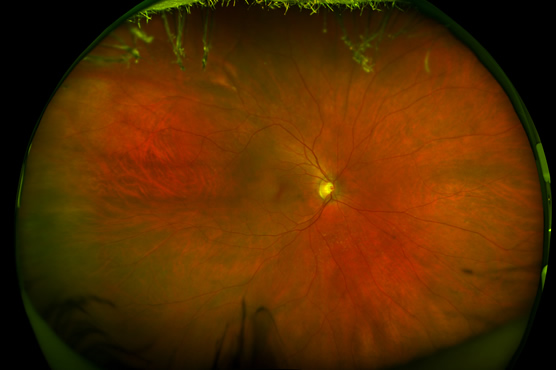Medical Treatment of Eye Diseases
Conjunctivitis
Conjunctivitis is an inflammation of the conjunctiva, the mucous membrane covering the eyeball and interior eyelid. This condition is most commonly caused by dry eyes, allergies, bacterial infection, or viral infection. Some strains of conjunctivitis are very contagious, so it is important to avoid busy public spaces until your optometrist has established a diagnosis and provided further instructions.

Symptoms
- Redness
- Itching or burning
- Swelling
- Watering
- Light sensitivity
- Green, white, or yellow discharge
- Crusty eyes upon waking
Treatment
Dry Eye Disease
The eye requires moisture to function properly and comfortably. When the eye does not consistently have adequate moisture, it is known as dry eye disease. This condition typically appears for one of two reasons:
- The body does not naturally produce enough tears.
- The body does not produce quality tears.
Symptoms
- Redness
- Irritation (burn, grit, itch)
- Watering
- Blurry vision
- Light sensitivity
- Eye fatigue
- Contact lens discomfort
Treatment
Read more about different dry eye disease treatment options.
Glaucoma
Glaucoma is a disease that causes permanent damage to the optic nerve which impacts your peripheral vision. This damage is usually associated with intraocular pressure, also known as IOP. There are three main types of glaucoma:
Open-Angle Glaucoma
Acute Angle-Closure Glaucoma
Normal Tension Glaucoma
Normal Tension Glaucoma is when IOP appears normal, but the optic nerve still sustains damage. This is the least common and most baffling form of the disease.
Symptoms
Treatment
Age-Related Macular Degeneration
The macula is the small area of the retina responsible for detailed central vision. Age-related macular degeneration (AMD) is a disease that results in poor macular function, decreasing vision over time.
Permanent damage to the macula can be caused by deposits (drusen) collecting on macular tissue (Dry AMD) or by irregular blood vessel growth invading the macular tissue (Wet AMD).
Symptoms
Treatment
Cataracts
Cataracts are a common part of ageing. In fact, most patients over 40 years of age have some level of cataract development.
Over time the proteins in the lens of the eye start to restructure, grouping closer together and becoming cloudy. This condition can be made more severe by long- term exposure to UV rays without protection (i.e., sunglasses). A cataract can make it difficult to see clearly and cause colour to appear washed out or faded.
Symptoms
- Cloudy or dim vision
- Poor night vision
- Sensitivity to light or glare
- Frequent eyeglass prescription changes
